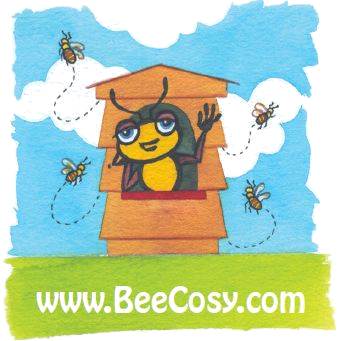Instructions
How to get the most from your Bee Cosy
As Protection Against Cold, Wet and Windy Winter Conditions
The Bee Cosy should be used when external temperatures are likely to be below 7C (45F). Your colonies will have formed a defined cluster at this temperature. The Bee Cosy will raise the internal hive temperature that can be achieved by your bees using a certain amount of energy. This allows a colony to form a larger cluster, consume less stores and have more chance of being able to access the stores hey have.
To Raise the Temperature within your Hive
There are times when you may wish to raise the internal temperature in your hives.
- Varroa treatments can be more effective at higher hive temperatures
- During a nectar flow the Bee Cosy can help bees turn nectar into honey.
- Late autumn feeding can be more effective with higher internal hive temperatures.
Dos and Don’ts
- The Bee Cosy may be used with open mesh or solid hive floors
- To avoid the risk of condensation, hive roofs should have side ventilation.
- Fit when the hive roof and walls are dry to avoid trapping moisture.
- Check your hive roof is at an angle to encourage water to run off the Bee Cosy.
- Remove snowfalls to avoid them freezing or melting on the Bee Cosy.
- Do not leave items resting on the Bee Cosy - this will damage the waterproof outer.
- Please consult the FAQ page on www.beecosy.com for more information
When should the Bee Cosy be Taken Off?
Depending on your hive management plan you can either:-
- Remove the Bee Cosy when temperatures are regularly over 7C (45F) in Spring, or
- Leave on for a few weeks longer to encourage early brood-rearing.
Care and Maintenance
After use, the Bee Cosy should be wiped clean with a damp cloth and left to dry slowly at room temperature. It should be stored indoors to avoid the risk of mould or vermin attack.
Do not hand wash, machine wash, machine dry, bleach, iron or dry clean
To download a set of these instructions please Click Here

